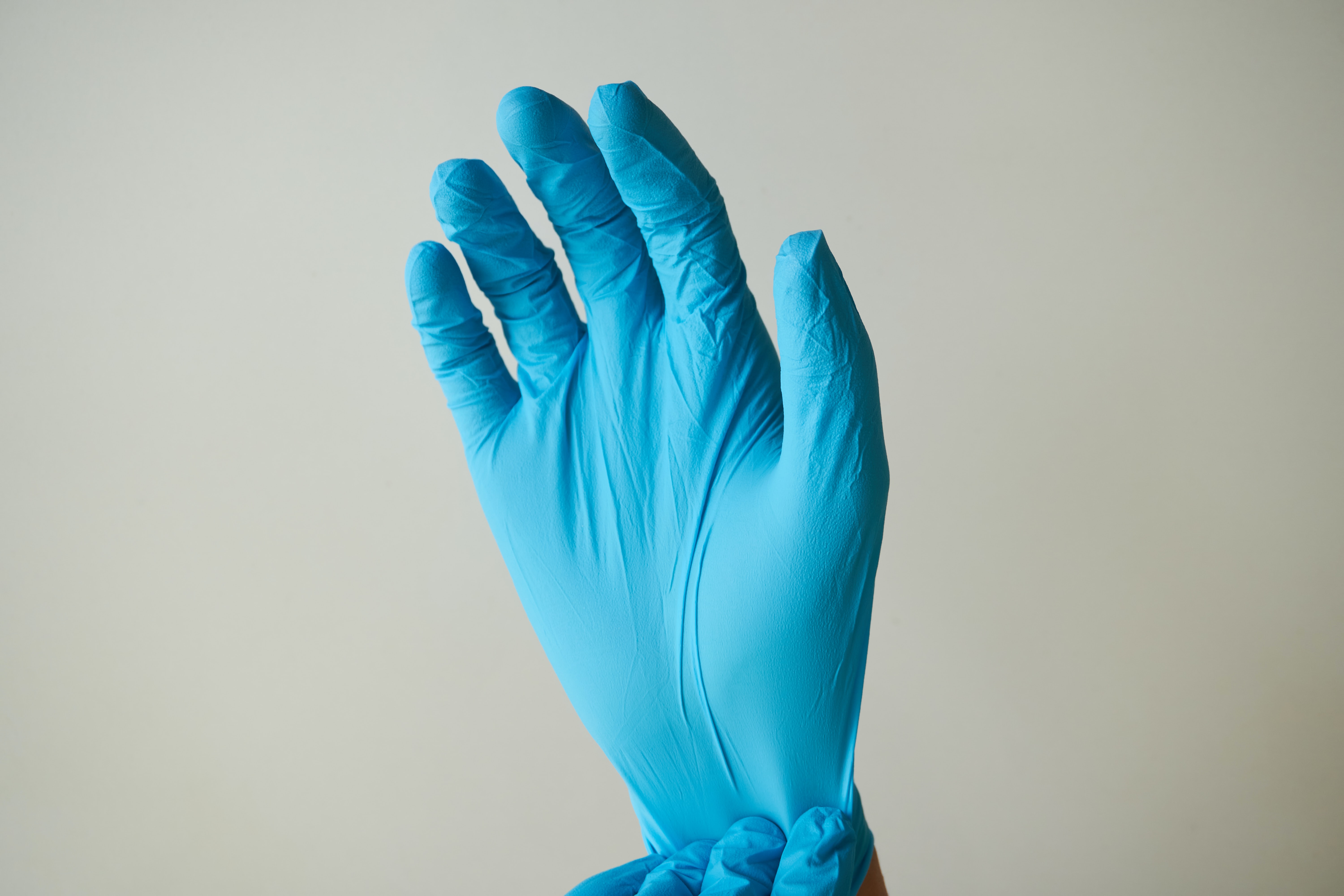Latex Allergy

What is Latex?
In this document, the term “latex” refers to natural rubber latex, the product manufactured from a milky fluid derived from the rubber tree, Hevea brasiliensis. The final rubber item is composed of natural proteins and added chemicals. Several types of synthetic rubber are also referred to as “latex”, but these do not release the proteins that cause allergic reactions.
Where is Latex used?
Latex is often used in the manufacture of protective gloves. As well as being used for gloves, latex is found in a variety of medical devices which include airways, intravenous equipment, catheters, stethoscopes, dressings and bandages (list not exhaustive)
What are the Health Problems associated with Latex?
Exposure to latex products may result in the following reactions:
Irritant contact dermatitis (most common reaction) – the development of dry, itchy, irritated areas of the skin, usually the hands. This reaction is caused by irritation from wearing gloves and by exposures of the powders added to them. Irritant contact dermatitis is not an allergy and symptoms normally subside when contact ceases.
Type IV allergic reaction – usually result from the chemicals added to latex during harvesting, processing or manufacturing. This is associated with the development of dermatitis, occurring between 10-24 hours after exposure and can get worse over the next 72 hours.
Type I allergic reaction – This is a reaction to certain proteins in latex rubber. The amount of latex exposure needed to produce sensitisation or an allergic reaction is unknown. Increasing the exposure to latex proteins is considered to increase the risk of developing allergic symptoms. In sensitised individuals, these usually begin with minutes of exposure, but they can occur hours later and can be quite varied. Mild reactions to latex can involve skin redness, rash, hives or itching. More severe reactions may involve respiratory symptoms such as runny nose, sneezing, itchy eyes, scratchy throat and asthma (difficulty breathing, coughing and wheezing). Rarely, shock may occur.
Who is at risk of developing Latex allergy?
Healthcare workers risk developing latex allergy because they use latex gloves frequently. Workers with less glove use (such as housekeepers, hairdressers and workers in industries that manufacture latex products) are also at risk.
Is skin contact the only type of Latex exposure?
No. Latex proteins become fastened to the lubricant powder used in some gloves. When workers change gloves, the protein/ powder particles become airborne and can be inhaled.
How is Latex allergy treated?
Detecting symptoms early, reducing exposure to latex and obtaining medical advice are important to prevent long-term medical effects. Once a worker becomes allergic to latex, special precautions are needed to prevent exposures. These can be discussed with the Occupational Health Physician.
What measures can be taken to protect against Latex allergies?
- Use non-latex gloves for activities that do not involve sterile procedures
- Appropriate barrier protection is necessary when handling infectious materials. If you choose latex gloves, use powder-free gloves with reduced protein content
> Such gloves reduce exposure to latex protein and thus reduce the risk of latex allergy
> So called hypoallergenic latex gloves do not reduce the risk of latex allergy. However, they may reduce reactions to chemical additives in the latex (allergic contact dermatitis)
- Use appropriate work practices to reduce the chance of reactions to latex
> When wearing latex gloves do not use oil-based hand creams or lotions (which can cause glove deterioration)
> After removing latex gloves, wash hands with a mild soap and dry thoroughly
> Practice good housekeeping: frequently clean areas and equipment contaminated with latex-containing dust
- Learn to recognise the symptoms of latex allergy
> Skin rash; hives; flushing; itching; nasal; eye or sinus symptoms; asthma and (rarely) shock
What if you think you have an allergy to Latex?
If you develop symptoms suggestive of an allergy to latex, avoid direct contact with latex gloves and other latex-containing products. Seek medical advice from the Occupational Health Service.
If you have latex allergy, inform Occupational Health. The staff will be able to discuss the most appropriate precautions, which may include the following:
- Avoidance of contact with latex gloves and other products
- Advise on suitable alternative to non-latex gloves
- Avoidance of areas where you might inhale the powder from latex gloves used by other workers
Important
It is very important that you tell health care personnel (physicians, nurses, dentists etc) involved in your care that you have latex allergy.





